St. Anthony of Eminence Castle, Icon of the city of Cumaná //Castillo San Antonio de la Eminencia, Icono de la ciudad de Cumaná. [ESP - ENG]
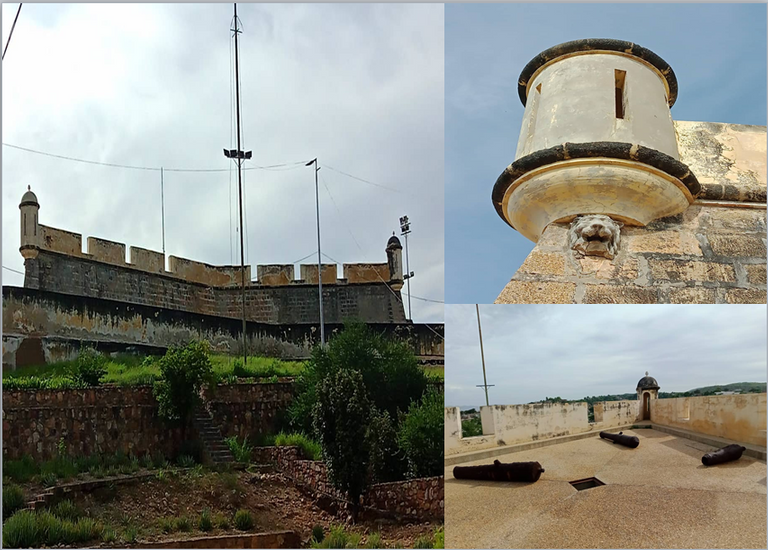
Greetings dear community lover of design and architecture, I wish you are enjoying good health and God's blessing rests in your homes, today I share with you my visit to the Castillo San Antonio de a Eminencia, an icon and heritage of colonial architecture of the firstborn of the American continent: Cumana, who this November 27 celebrates 507 years of its foundation, is the capital of the state of Sucre and the homonymous municipality, is located at the entrance of the Gulf of Cariaco, very close to the mouth of the Manzanares River, is a city rich in history, culture and beautiful spaces for fun and recreation in family.
The castle is located on the Eminence hill, the highest sector of the city, hence part of its name, was built in the seventeenth century (1659) in order to protect the city from attacks by pirates and privateers (French, Dutch and others) is estimated that its construction lasted 17 years and was carried out by orders of the then governor of the province when the country was under the rule of the Spanish empire. (information provided by the castle guide)
On the way to the castle there is a sculpture made of wood called "portal to infinity" representing the entrance of the land to the sea, as you move forward you can see an iron cross that is decorated at Christmas, at the entrance of the castle is a cannon, a weapon widely used in colonial times.
Saludos estimada comunidad amante del diseño y la arquitectura, deseo se encuentren disfrutando de buena salud y la bendición de Dios repose en sus hogares, hoy comparto con ustedes mi visita al Castillo San Antonio de la Eminencia, un icono y patrimonio de la arquitectura colonial de la primogénita del continente Americano: Cumaná, quien este 27 de noviembre celebra 507 años de su fundación, es la capital del estado Sucre y el municipio homónimo, se encuentra ubicada en la entrada del Golfo de Cariaco, muy cerca de la desembocadura del Río Manzanares, es una ciudad rica en historia, cultura y hermosos espacios para la diversión y esparcimiento en familia.
El castillo se ubica en el cerro la Eminencia, el sector más alto de la ciudad, de allí proviene parte de su nombre, fue construido en el siglo XVII, (año 1659) con la finalidad de proteger a la ciudad de los ataques de piratas y corsarios (Franceses, Holandeses entre otros) se estima que su construcción duró 17 años y se realizó por ordenes del entonces gobernador de la provincia cuando el país estaba bajo el dominio del imperio español. (información suministrada por la guía del castillo).
En la camineria hacia el castillo se encuentra una escultura hecha en madera denominada "portal hacia el infinito" representando la entrada de la tierra hasta el mar, a medida que avanzas se observa una cruz de hierro que es decorada en navidad, en la entrada del castillo se encuentra un cañón, un arma muy usada en tiempos de la colonia.
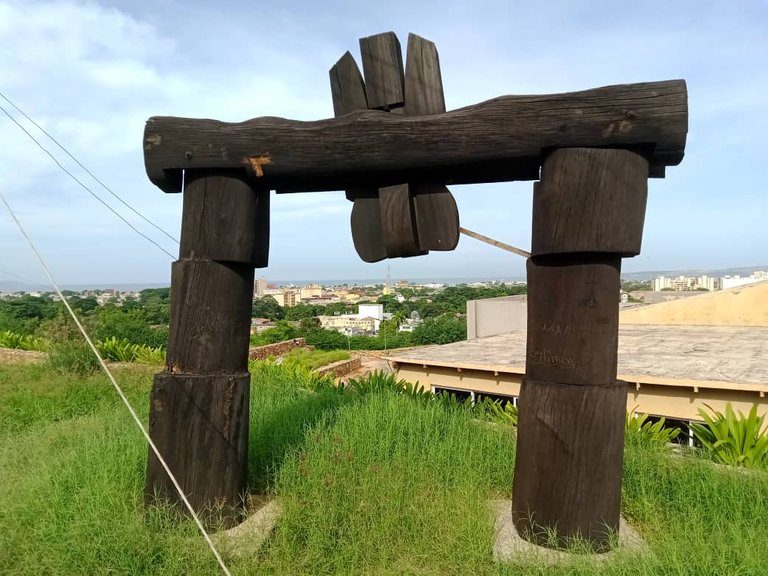
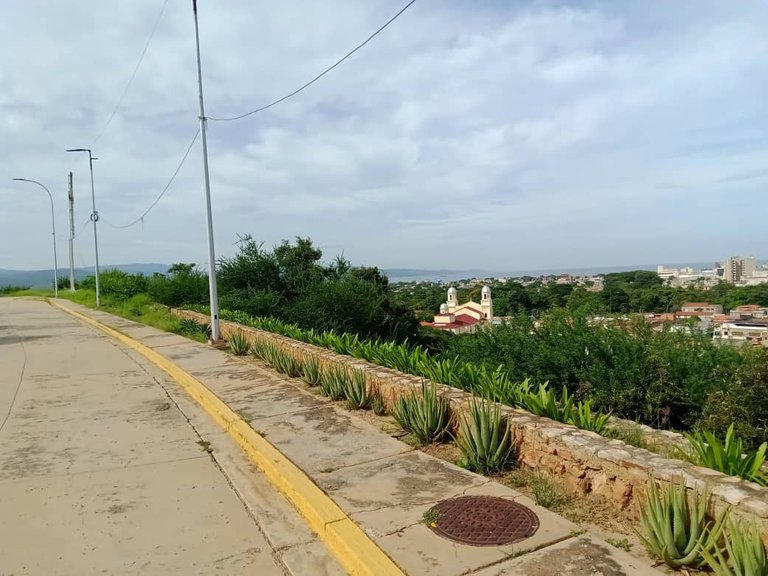
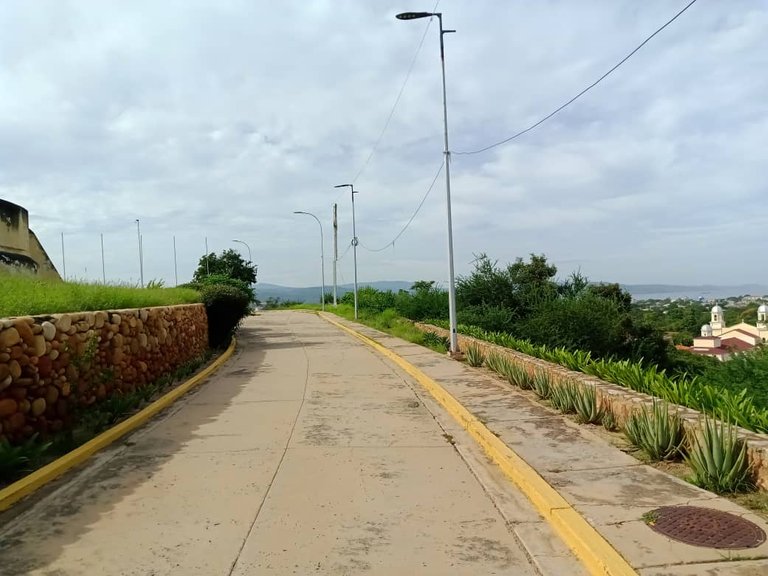



It is the third time I visit the castle, this time in company of my husband, we could not take our child because he was in classes, I am sure that if he comes he will have a lot of fun and ask a lot of questions; I think I will not get tired of visiting it, every time I go there is new information that increases my curiosity, and I ask myself the same question, what materials did they use for its construction, what has allowed it to stay for so many years? While going up I took several pictures of this great construction and it is exciting to see how it contrasts perfectly with the landscape, the visit was at 9 in the morning and we arrived at the castle very tired and thirsty, my husband and I were exhausted and the guide without wasting time started the tour, I had to drink water as quickly as possible to not miss any detail of his talk; I tell you that the first time I visited this place I did not bring water; it was an outing that came up without planning it and although I liked it very much, because I had never seen a castle, I arrived home very tired because the tour was at 2 o'clock in the afternoon when the sun is very hot, I was so happy to see the castle that I did not care about the thirst and tiredness, being in a castle was a great experience, I just listened to the guide explaining every detail of the tour.
I wanted to see every detail, touch the walls, walk through all the spaces without missing anything, I listened very carefully to the guide explaining the history of the castle and asked many questions, I had read several stories of princesses in beautiful castles with a happy ending, but the reality of these fortifications is far from fairy tales, they are great architectural and imposing works, but with many secrets, stories and enigmas to tell.
Es la tercera vez que visito el castillo, esta vez en compañía de mi esposo, no pudimos llevar a nuestro niño porque estaba en clases, estoy segura que si él viene se divertirá mucho y hará una gran cantidad de preguntas; creo que no me cansaré de visitarlo, siempre que voy surge una nueva información que aumenta mucho más mi curiosidad, y me hago la misma pregunta ¿que materiales usaron para su construcción, que le ha permitido mantenerse por tantos años? mientras subía tomé varias fotos de esta gran construcción y es emocionante ver como contrasta a la perfección con el paisaje, la visita fue a las 9 de la mañana y llegamos al castillo muy cansados y sedientos, mi esposo y yo estabamos agotados y la guía sin perder tiempo inicio el recorrido, tuve que tomar agua lo más rápido posible para no perder ningún detalle de su charla; les cuento que la primera vez que visité este lugar no llevé agua; fue una salida que surgió sin planificarla y aunque me gustó mucho, porque nunca había visto un castillo, llegué a casa muy cansada porque el recorrido fue a las 2 de la tarde cuando el sol está muy caliente, estaba tan feliz de ver el castillo que no me importó la sed y el cansancio, estar en un castillo fue
muy emocionante, quería ver cada detalle, tocar las paredes , recorrer todos los espacios sin obviar nada, escuchaba con mucha atención al guía explicar la historia del castillo y hacía muchas preguntas; había leído varias historias de princesas en hermosos castillos con un final feliz, pero la realidad de estas fortificaciones dista mucho de los cuentos de hadas, son grandes obras arquitectónicas e imponentes, pero con muchos secretos, historias y enigmas que contar.

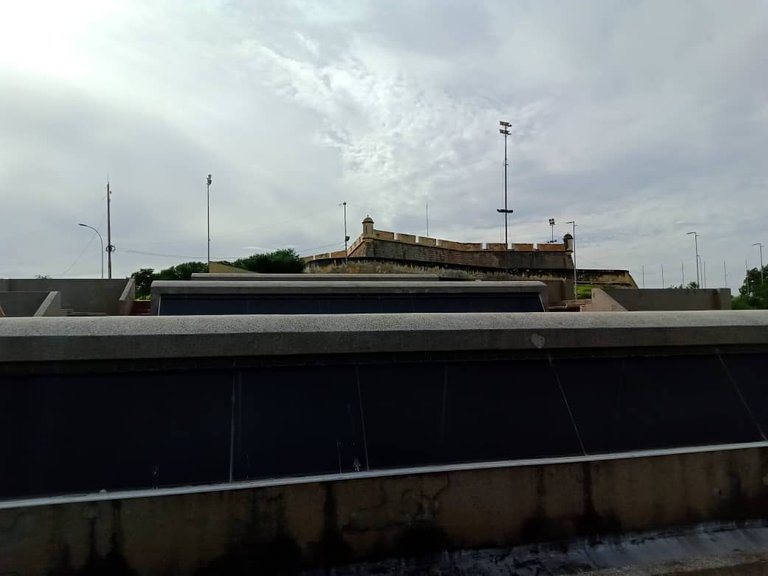
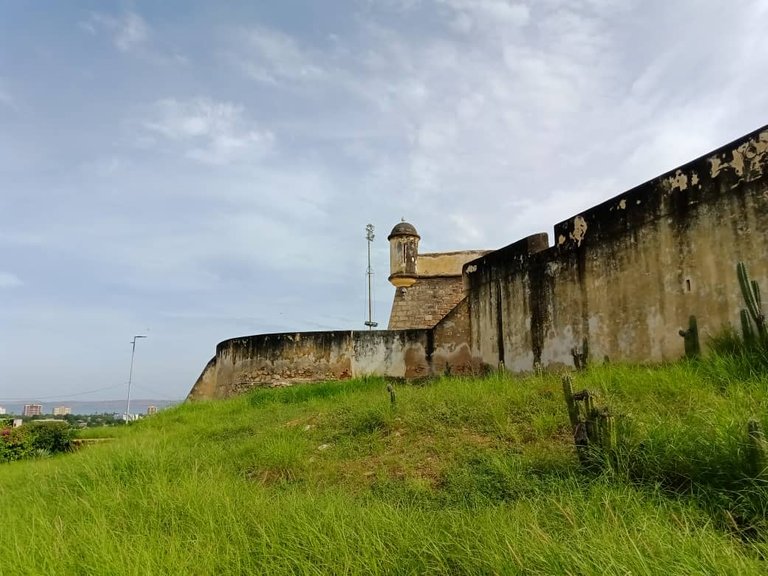
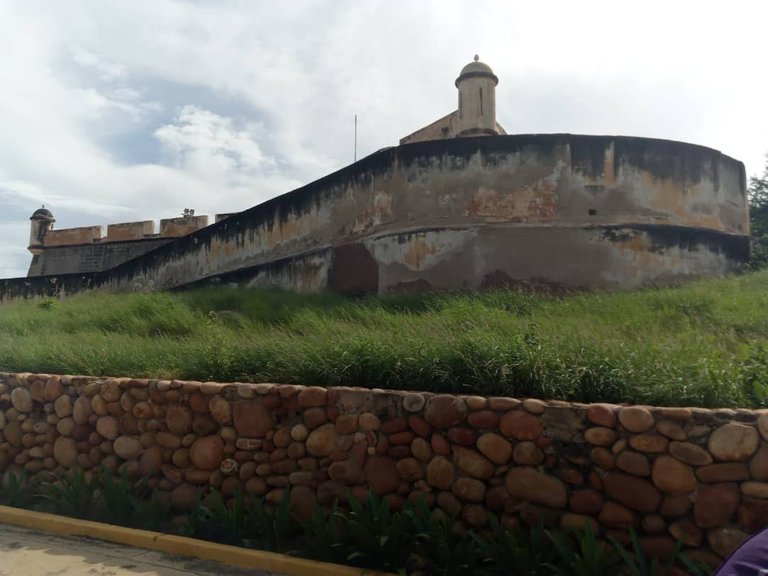
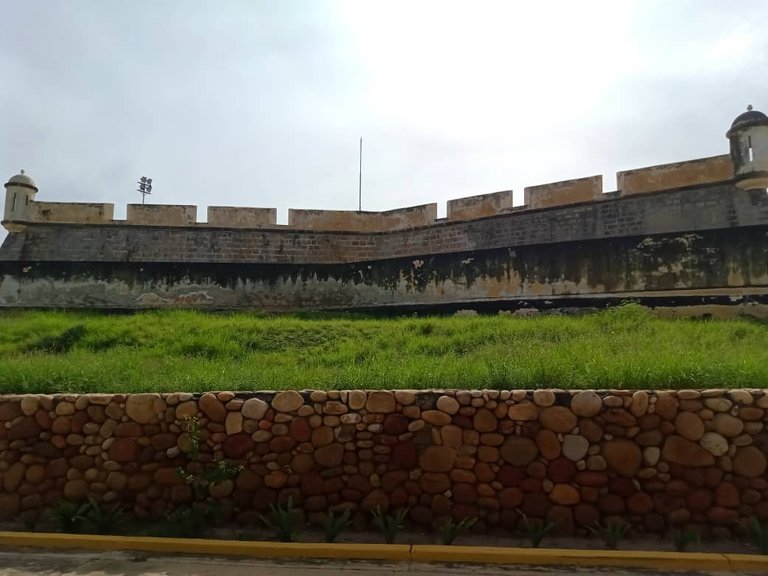
Already at the entrance of the castle on the right side of the stairs at the bottom are located the prisons, the original door was made of wood but was replaced by an iron one, it is a kind of room divided in turn into several rooms, it was totally closed, When the prisoner was there, he did not know if it was day or night, there were only trumpet-shaped windows that allowed the circulation of air, but did not allow sunlight, inside it has several arches of calicanto and cobblestone that serve as a base and support to the structure; There are preserved several utensils of the time as the press to make tobacco, coat racks, grinding stone, stone to filter water, samples of coral limestone, among others, Seeing these utensils reminded me of what the history teacher told us about how man took advantage of nature's resources to build his utensils and make life easier. Of all these utensils, the one that caught my attention was the grinding stone, a rock with an oval shape, which according to the information provided by the guide had to be polished with another rock to give it shape and be able to use it without risk.
Ya en la entrada del castillo al lado derecho de las escaleras en la parte de abajo se ubican las prisiones, la puerta original era de madera pero fue reeemplazada por una de hierro, es una especie de habitación dividida a su vez en varias habitaciones, era totalmente cerrada, al estar allí el prisionero pedía la noción del tiempo no sabía si era de día o de noche, solo habían ventanas en forma de trompeta que permitían la circulación del aire, más no pasaban la luz solar, en su interior tiene varios arcos de calicanto y adoquin que sirven de base y soporte a la estructura; allí se conservan varios utensilios de la época como la prensa de hacer tabaco, percheros, piedra de moler, piedra para filtrar el agua, muestras de calizas coralinas, entre otros, ver estos utensilios me hizo recordar lo que nos contaba el profesor de historia sobre como el hombre aprovechaba los recursos de la naturaleza para construir sus utensilios y hacer la vida más fácil de todos estos utensilios el que llamó mi atención fue la piedra de moler, es una roca con forma de óvalo, que de acurdo a la información suministrada por la guía debía ser pulida con otra roca para darle forma y poder usarla sin riesgos.
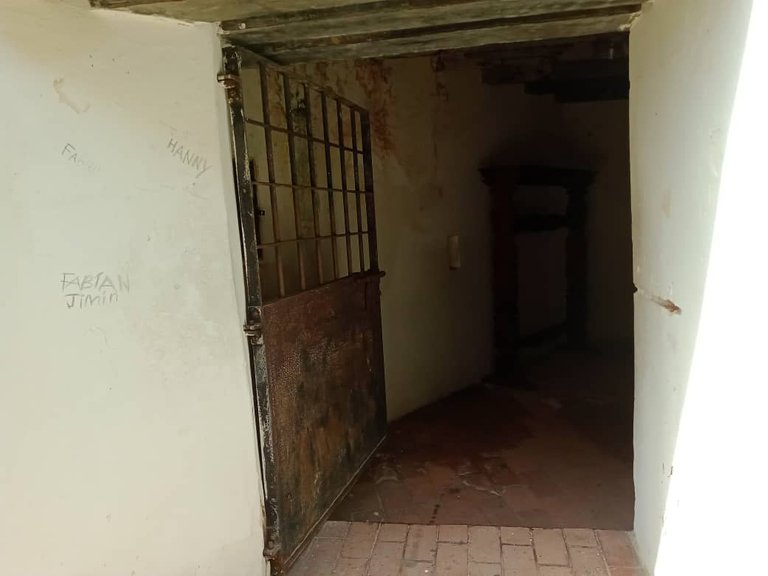
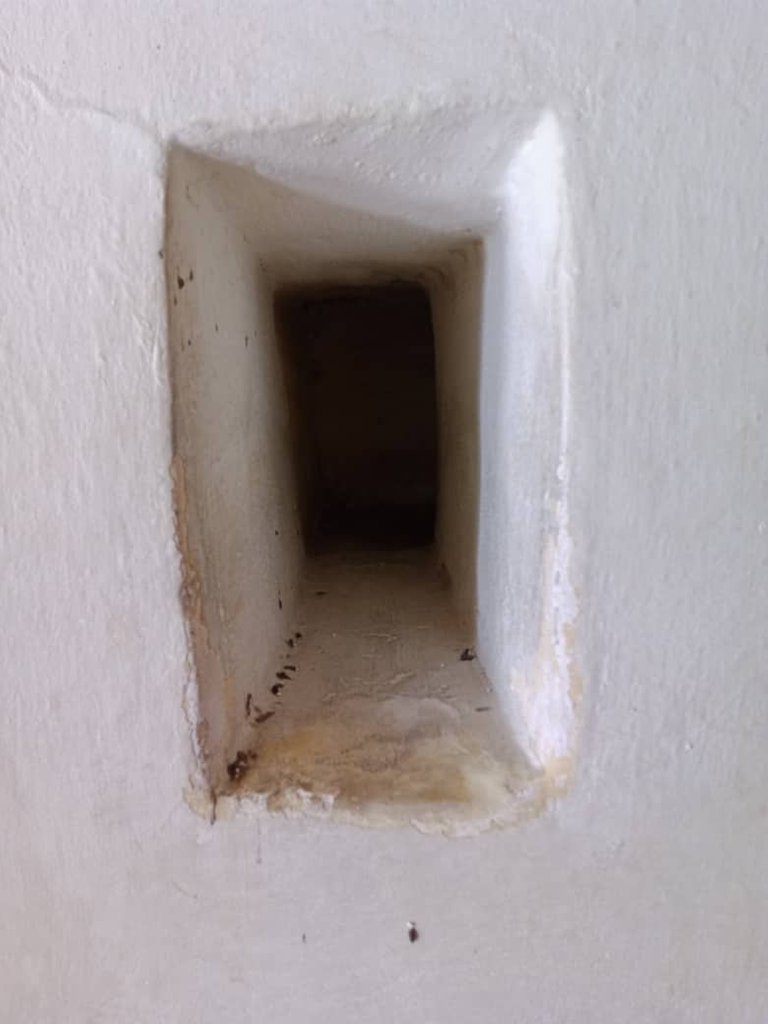
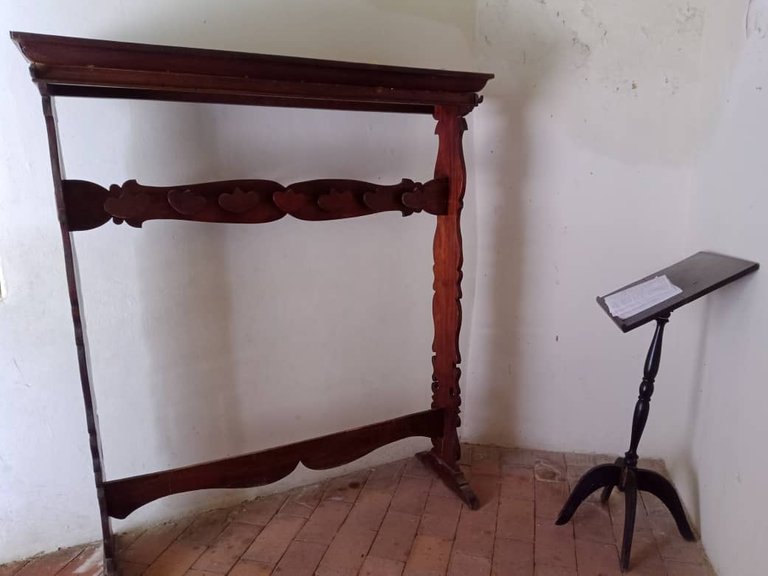
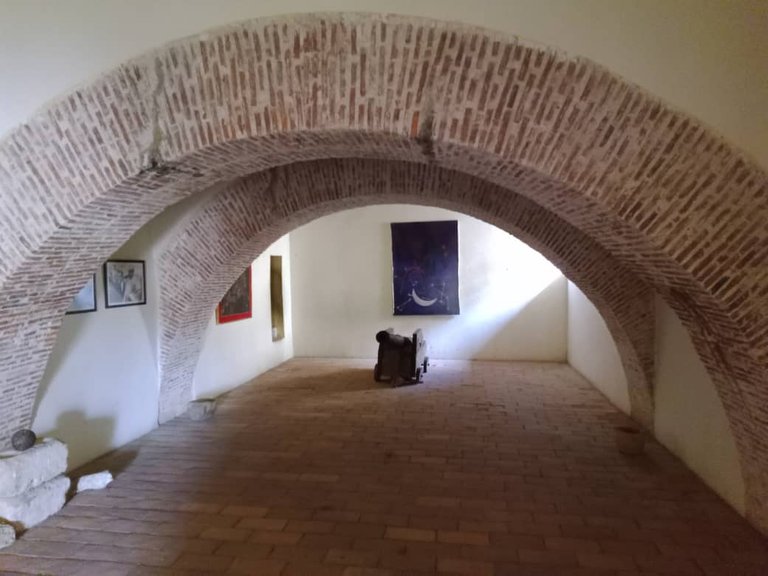
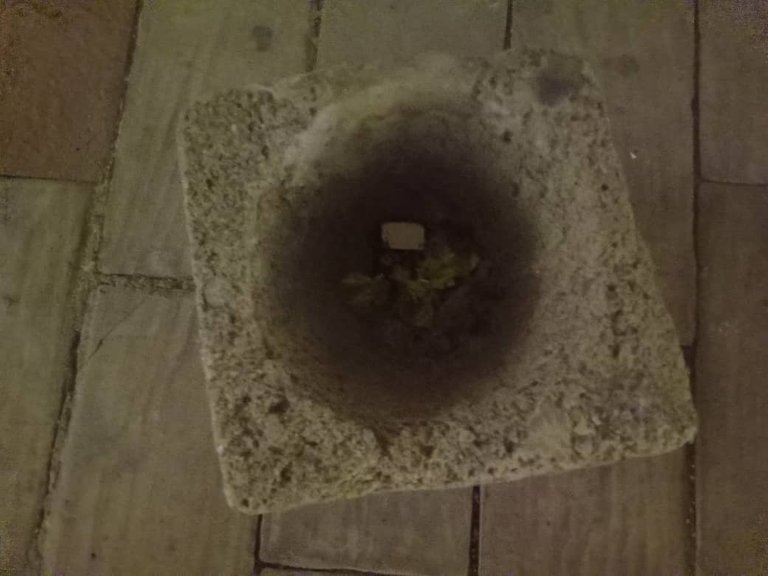
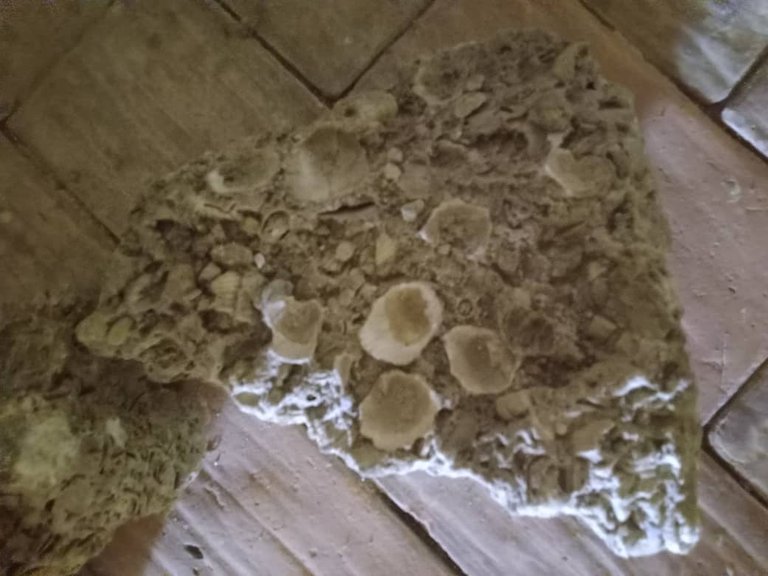
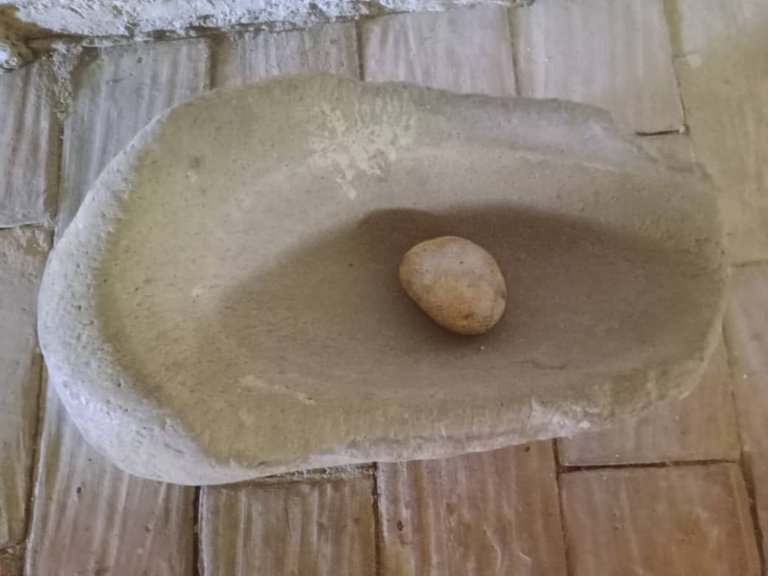
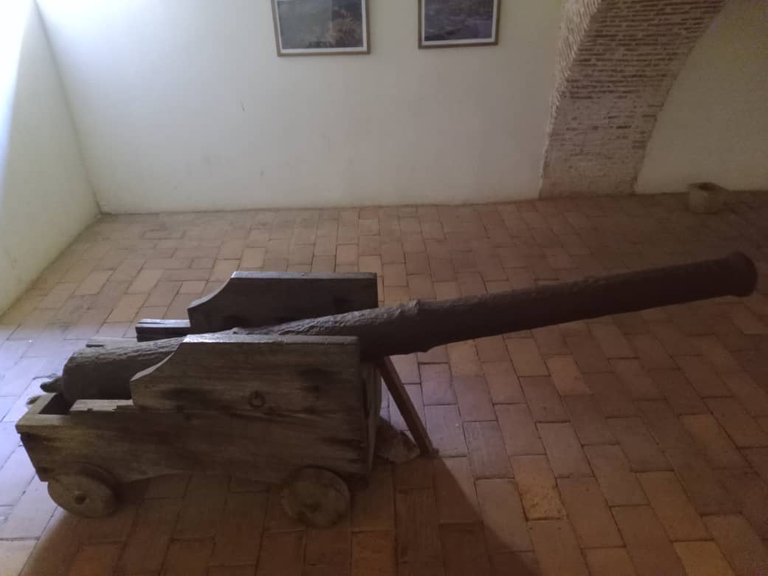
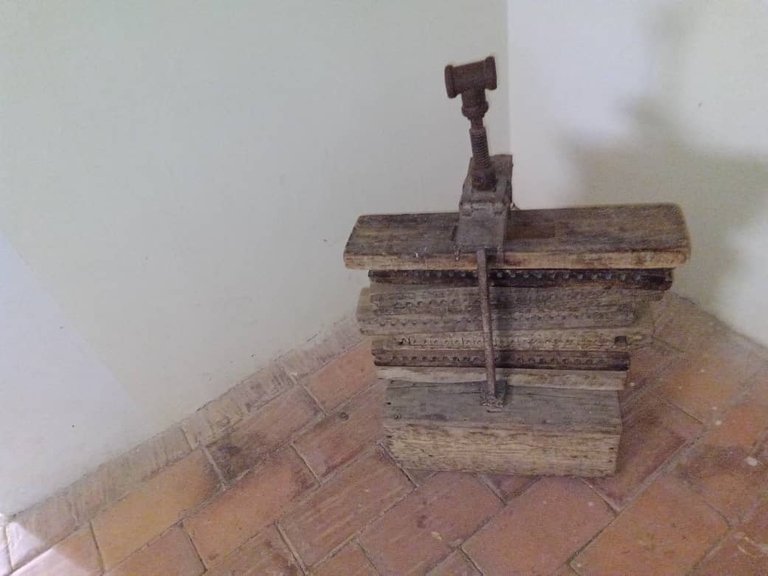
According to the punishment of the prisoner was assigned a prison, in this castle was imprisoned General José Antonio Páez, hero and president of Venezuela for several periods, during the government of the Monagas Brothers organized a revolt to overthrow the president and sent as a prisoner to this castle where he remained 8 months, The prison where Paez was currently has a small window at the top, which allows a little sunlight to pass through and have some clarity, also preserved there are some of the texts that the General read, and it is believed that the bed was the one he used during his stay in prison; There is one called "the prison of oblivion", which is less than a meter high and the prisoner had to be bent down, he could not move much because of the small space, which numbed his legs and body due to lack of mobility, this was part of his sentence and in a few days he died, I could observe this space very closely and it is very small, it has stairs for the person to remain seated or bent down if he is very tall, given the low ceiling.
De acuerdo al castigo del prisionero le asignaban una prisión, en este castillo estuvo preso el General José Antonio Páez, prócer y presidente de Venezuela durante varios períodos, durante el gobierno de los Hermanos Monagas organizó una revuelta para derrocar al presidente y enviado como prisionero a este castillo donde permaneció 8 meses, sufriendo muchas torturas y comiendo una vez al día, la prisión donde estuvo Páez actualmente tiene una pequeña ventana en la parte de arriba, lo cual permite que pase un poco de luz solar y tenga algo claridad, también se conservan allí algunos de los textos que leía el General, y se cree que la cama que fue la que usó durante su permanencia en la prisión; hay una llamada "la prisión del olvido", que tiene menos de un metro de altura y el prisionero debía estar agachado, no se podía mover mucho por lo reducido del espacio, lo cual entumecia las piernas y el cuerpo por falta de movilidad, esto formaba parte de su condena y en pocos días fallecía, pude observar este espacio muy de cerca y es muy pequeño, tiene unas escaleras para que la persona permanezca sentado o agachado si es muy alto, dado lo bajo del techo.

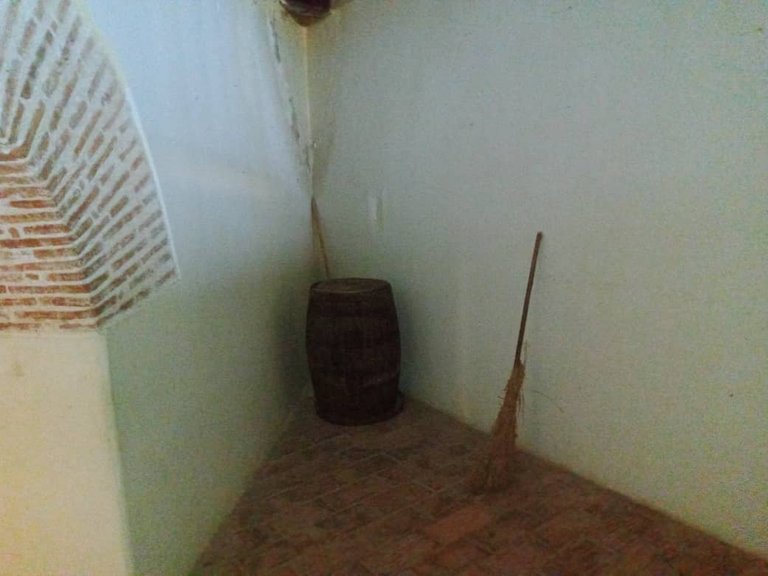


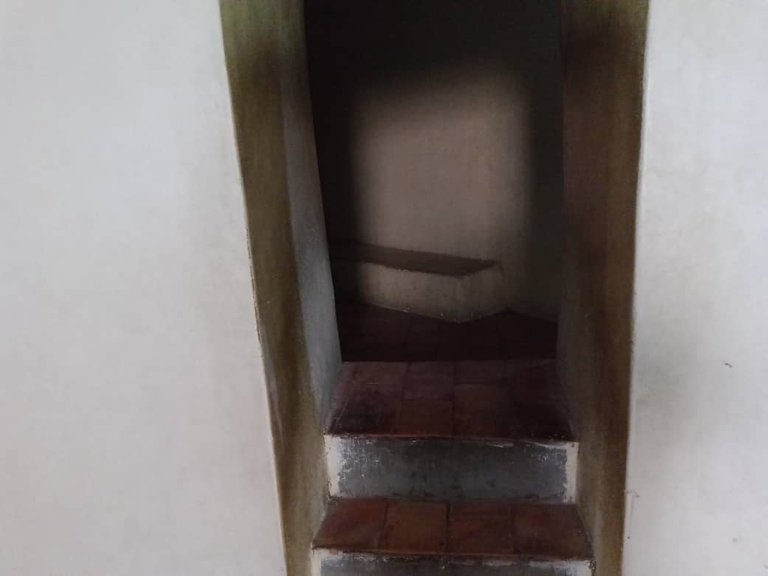
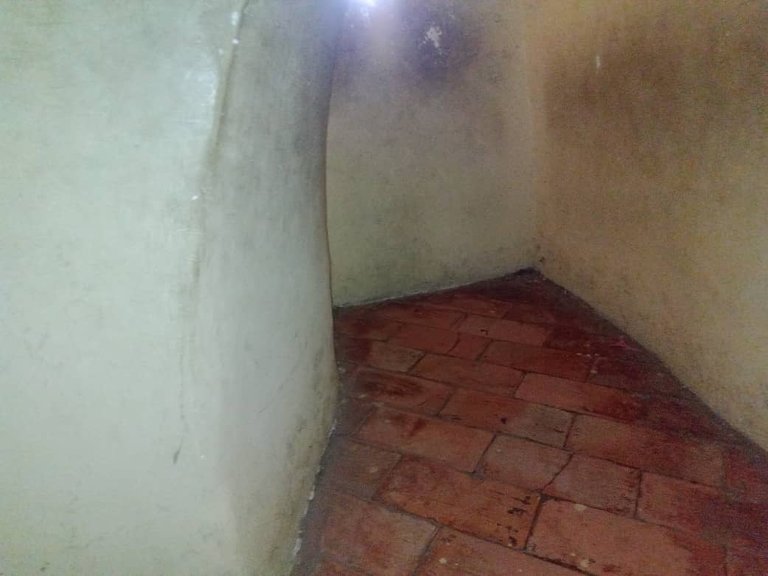

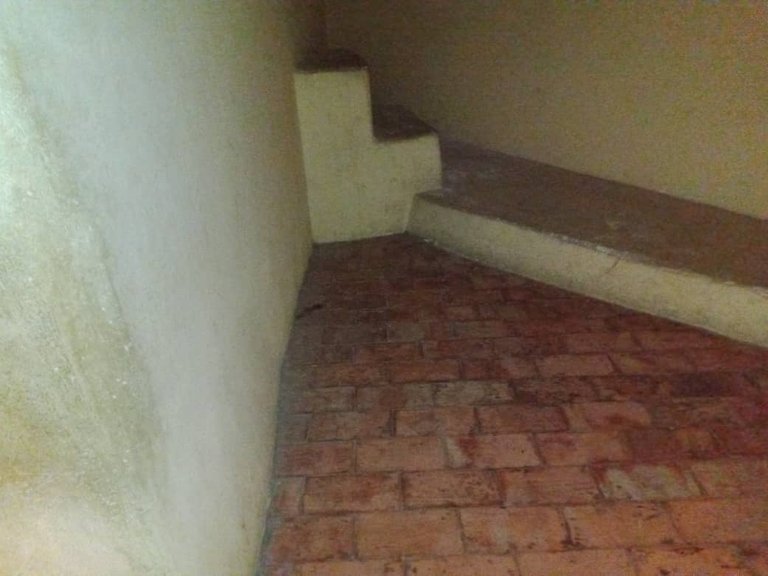
re is a very wide arch that acts as a support for the floor and the bridge, in addition to several holes that served to drain rainwater and prevent it from reaching the prisons; In this corridor you can see various sectors of the city, passing the bridge reminded me of the wooden bridges they make in the fields to cross the river and the streams when they grow due to the rains.
Al subir las escaleras nos encontramos con un gran corredor donde se exhiben cañones de época colonial, también un pasillo o puente que da acceso a la parte más alta de castillo, debajo de este puente está un arco muy ancho que actúa como soporte del piso y el puente, además varios orificios que servían para escurrir el agua de lluvia y evitar que llegara a las prisiones; en este corredor se pueden apreciar varios sectores de la ciudad, pasar el puente me hizo recordar los puentes de madera que hacen en los campos para cruzar el río y las quebradas cuando estos crecen por las lluvias.
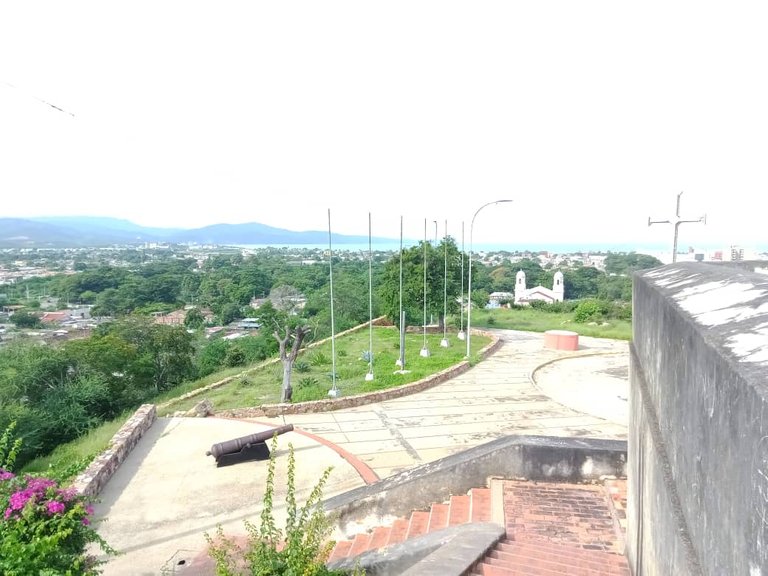
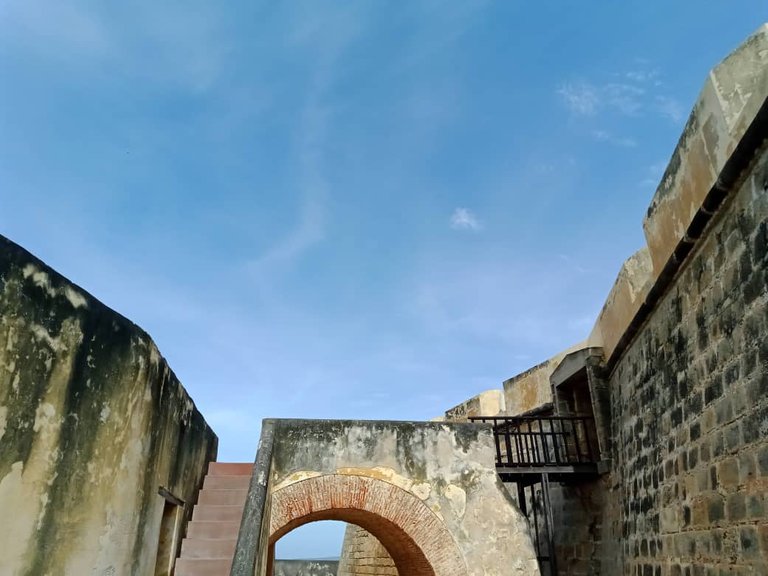

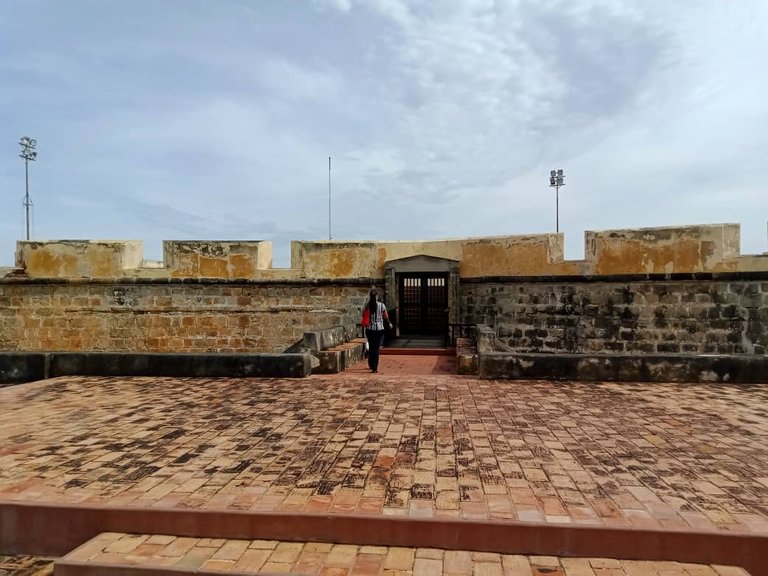



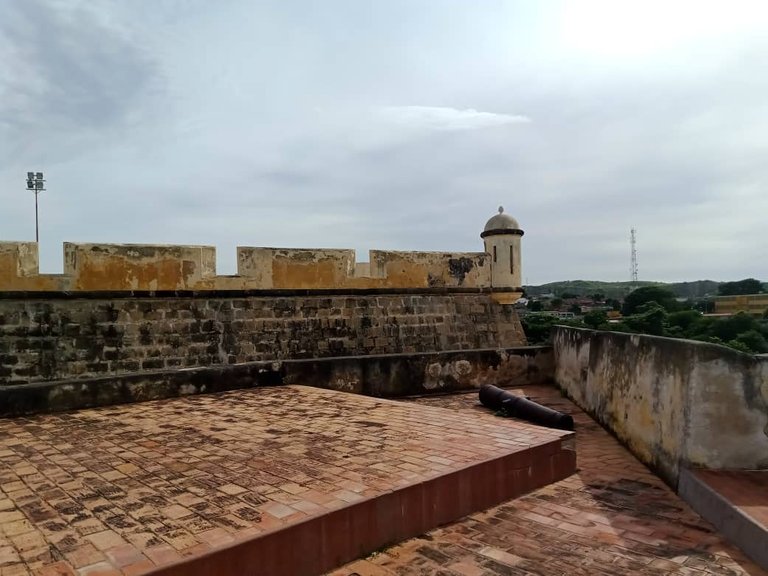
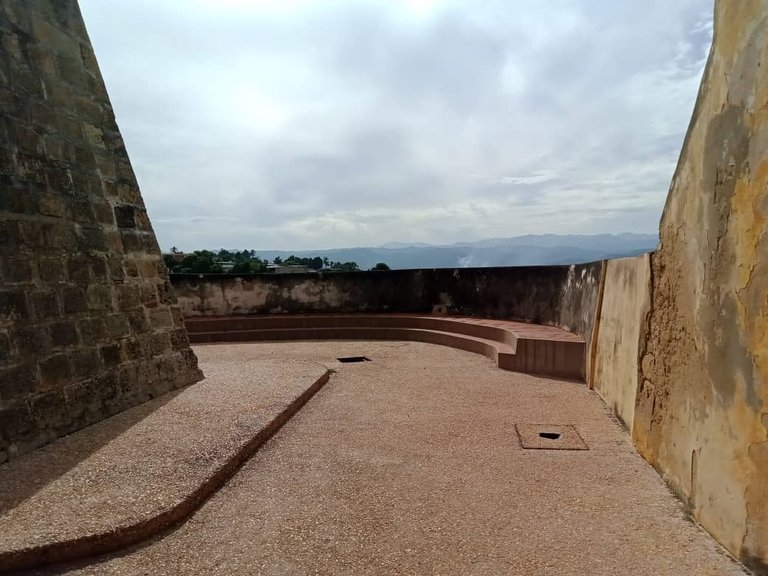
The castle has a model or architectural form of a four-pointed star, each one in the direction of the cardinal points, characteristic of the castles that the colonizers built in strategic areas of the conquered cities to have a better control of the mobilization of the population, the walls are 2 meters thick which made the castle impenetrable, it is also believed that it had secret passages that connected it with government offices in the center of the city, this part of the tour is the most interesting for me, as they explain with what materials they built the castle; It is limestone rocks brought from the sea that had to be given a rectangular shape and glued with a mixture called "calicanto" (made with animal blood, aloe vera and lime) in fact in this part you can see a small column with limestone blocks joined with this mixture; there are also several cannons: Lombardas and culebrinas, typical of the seventeenth and eighteenth century, the castle in this area had several rooms that were destroyed by a strong earthquake that struck the city.
In the points of the star are located the sentry boxes, where the soldiers remained vigilant and attentive to any mobilization or presence of pirates and corsairs on the coast, here is also the mouth of the "cistern" where they stored water, its depth reached the first floor, being in this part of the castle is exciting, it allows to observe the different sectors of the city, such as the historic center, the church Santa Inés, the castle Santa María de la cabeza, the peninsula of Araya, among others.
I think that being a place of historical and cultural importance for the state and the city and also was declared National Heritage, it should be projected a little more, of course there are important cultural and educational events, which I had the opportunity to go on one occasion and it is impressive how children ask questions and attend the talk of the guides, but I think that with more publicity many more people would come to visit and learn about this part of the history and culture that identifies and represents the city, a few days of guided tours for school children would be ideal to spread among them and their families the interesting stories that keeps this and many other sites in the city, a transport route that reached the castle would also increase the number of visitors.
El castillo tiene un modelo o forma arquitectónica de estrella de cuatro puntas, cada una en dirección a los puntos cardinales, característica de los castillos que construían los colonizadores en zonas estratégicas de las ciudades conquistadas para tener un mejor dominio de la movilización de la población, las paredes tienen un espesor de 2 metros lo cual hacía que el castillo fuera impenetrable, se cree además que tenía pasadizos secretos que lo conectaban con oficinas gubernamentales en el centro dela ciudad, esta parte del recorrido es la más interesante para mi, ya que explican con que materiales construyeron el castillo; se trata de rocas calizas traídas del mar que debían darle forma rectangular y pegarlas con una mezcla llamada "calicanto" (hecha con sangre de animales, sábila y cal) de hecho en esta parte se puede observar una pequeña columna con los bloques de caliza unidos con esta mezcla; también hay varios cañones: Lombardas y culebrinas, propios del siglo XVII y XVIII, el castillo en esta zona tenía varias habitaciones que fueron destruidas por un fuerte terremoto que azotó a la ciudad.
En las puntas de la estrella se ubican la garitas, donde permanecían los soldados vigilantes y atentos a cualquier movilización o presencia de piratas y corsarios en la costa, aquí también se encuentra la boca del "aljibe" donde almacenaban el agua, su profundidad llegaba hasta la planta baja, estar en esta pare del castillo es emocionante, permite observar los diferentes sectores de la ciudad, como el casco histórico, la iglesia Santa Inés, el castillo Santa María de la cabeza, la península de Araya, entre otros.
Pienso que al ser un lugar de importancia histórica y cultural para el estado y la ciudad y que además fue declarado Patrimonio Nacional, debe proyectarse un poco más, claro está que allí se realizan importantes eventos culturales y educativos, a los cuales tuve la oportunidad de ir en una ocasión y es impresionante como los niños preguntan y atienden la charla de los guías, pero creo que con más publicidad llegarían muchas más personas a visitar y conocer esta parte de la historia y cultura que identifica y representa a la ciudad, unas jornadas de visitas guiadas a los niños en edad escolar sería ideal para difundir entre ellos y su familia las interesantes historias que guarda este y muchos otros sitios de la ciudad, una ruta de transporte que llegué al castillo también incrementaría el número de visitantes.


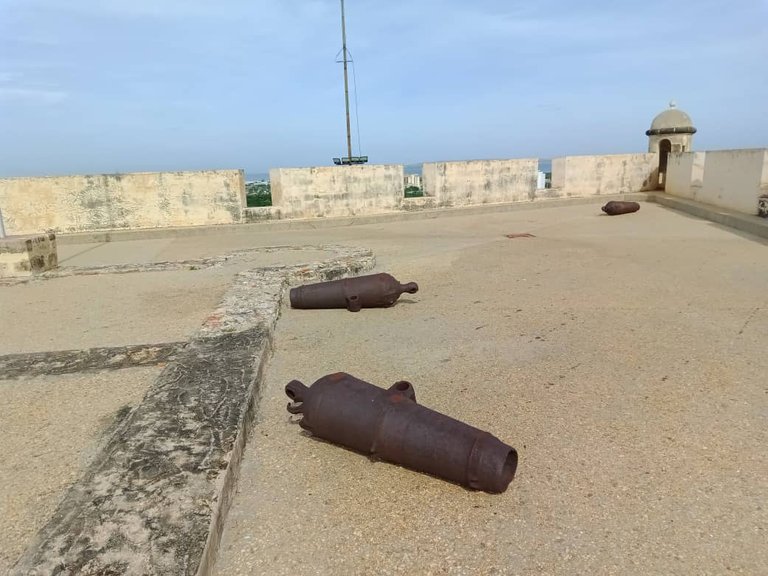
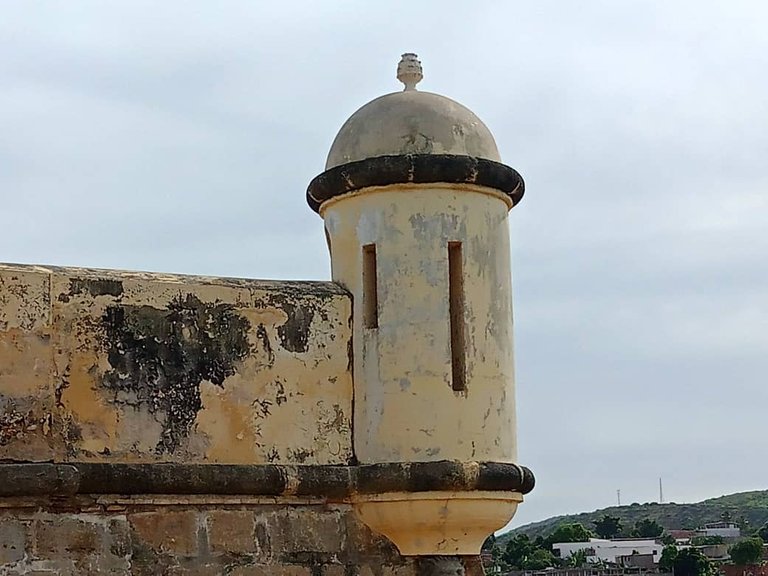

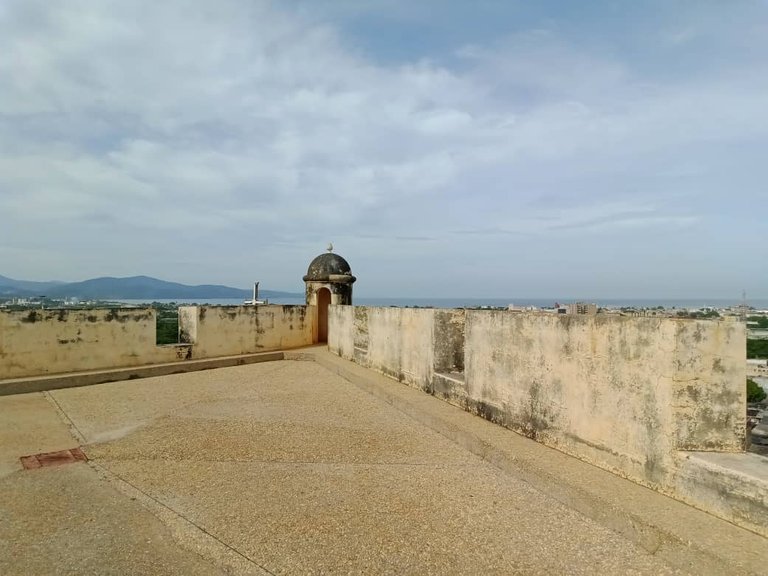
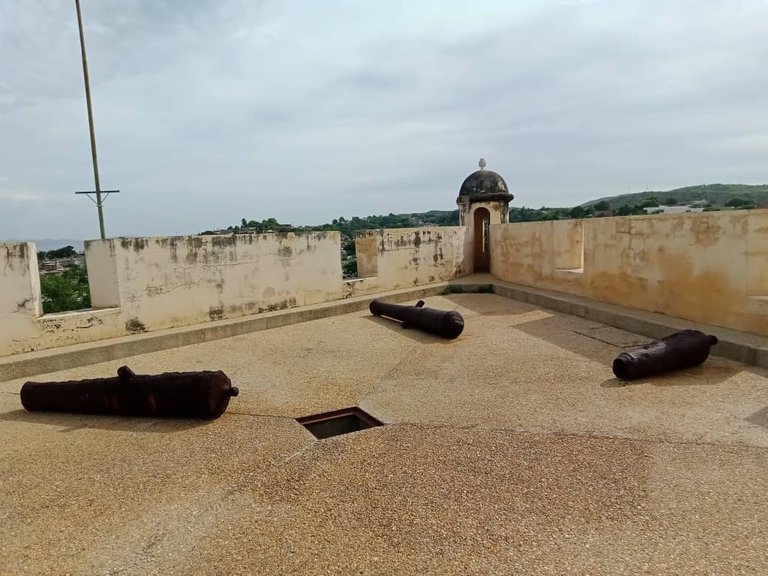
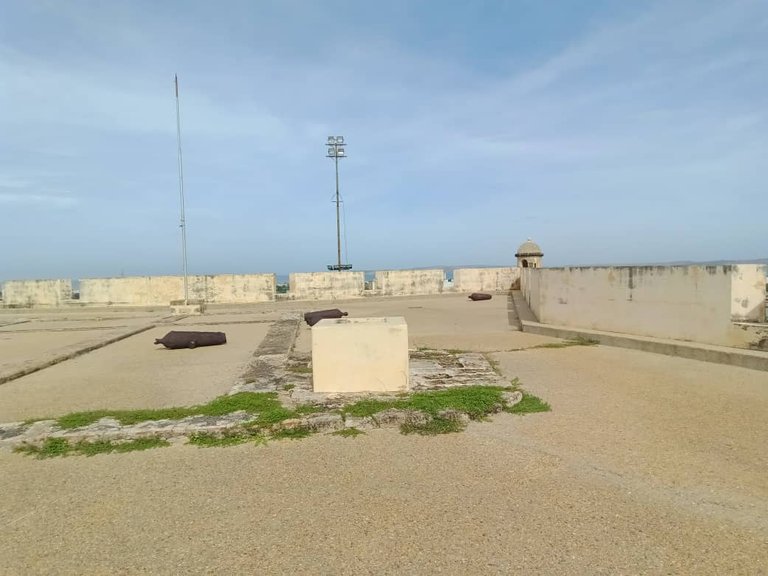

A place that I had forgotten to mention is "el polvorín" a kind of deposit with the optimal conditions of humidity and heat to keep the gunpowder if one of these two elements was altered the gunpowder was damaged or exploded, to enter you go down the stairs from the top where the sentry boxes are you pass through a small tunnel and legas, on my first visit I could go down to this place and observe every detail, it has some tables and barrels, which they used to store the gunpowder; currently the passage is not allowed because it is very humid.
Un lugar que había olvidado mencionar es "el polvorín" una especie de depósito con las condiciones de humedad y calor óptimas para guardar la pólvora si uno de estos dos elementos se alteraba la pólvora se dañaba o explotaba, para entrar bajas las escaleras desde la parte de arriba donde están las garitas pasas por un pequeño túnel y legas, en mi primera visita pude bajar a este lugar y observar cada detalle, dispone de unas mesas y barriles, que usaban para almacenar la pólvora; actualmente no se permite el paso porque está muy húmedo.

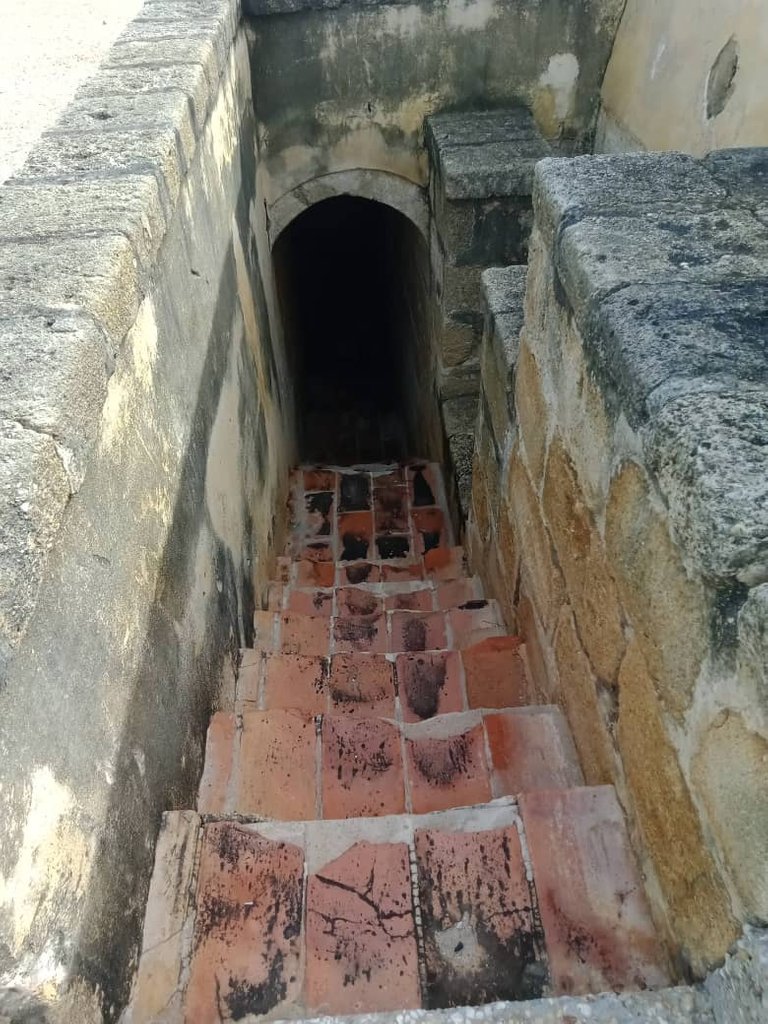
This visit to the castle was very enriching, I could remember the name of the mixture to join the limestone blocks "calicanto" and the guide explained to us why under the sentry boxes there are sculptures of lion heads, it was a seal that the Spaniards left in their constructions, with the intention of telling the corsairs that this territory had been conquered by Spain and therefore belonged to the Spanish crown and could not be invaded by them, I was able to observe the sculptures very closely and they are still in good condition, although some have a broken part the factions of the lion's face are very well defined, at first glance they seem to be made of cement, but according to the information of the guide it is calicanto with other elements to give it a better finish and a smooth texture.
Esta visita al castillo fue muy enriquecedora, pude recordar el nombre de la mezcla para unir los bloques de piedra caliza "calicanto" y el guía nos explicó por qué debajo de las garitas hay esculturas de cabezas de león, era un sello que los españoles dejaban en sus construcciones, con la intención de decirle a los corsarios que ese territorio había sido conquistado por España y por lo tanto pertenecía a la corona española y no podía ser invadido por ellos, Pude observar las esculturas muy de cerca y aún están en buen estado, aunque algunas tienen una parte rota las facciones de la cara del león están muy bien definidas, a simple vista parecen estar hechas de cemento, pero según la información del guía es calicanto con otros elementos para darle un mejor acabado y una textura suave.
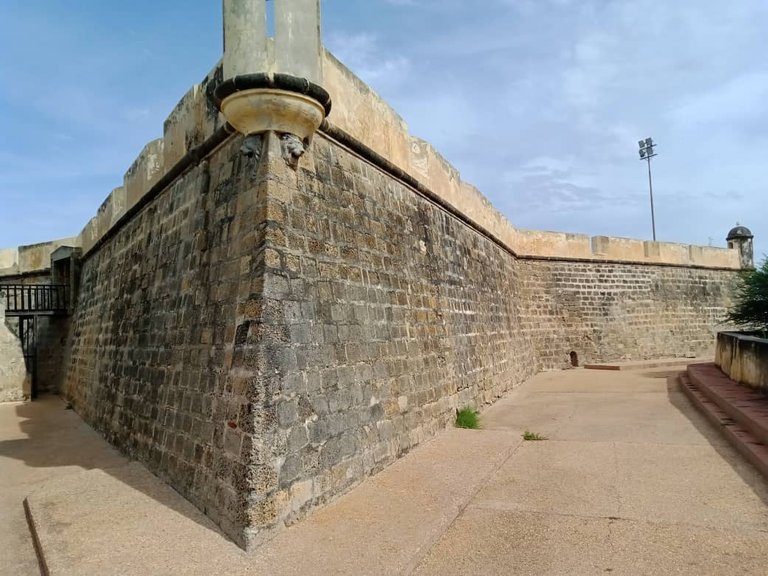
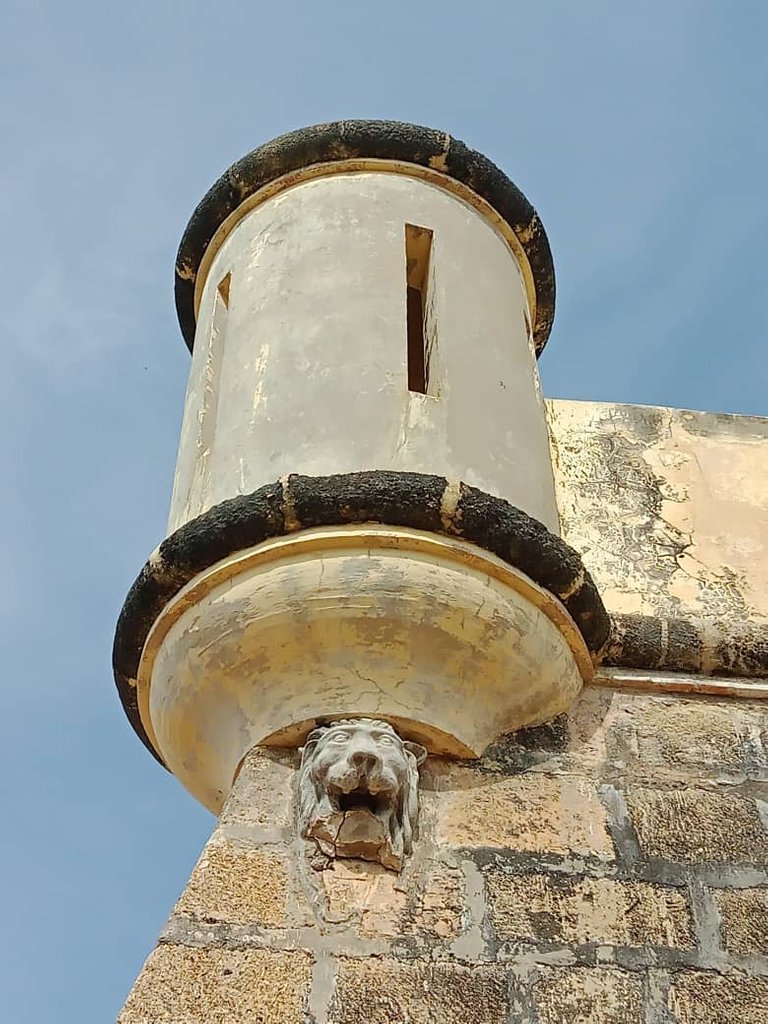
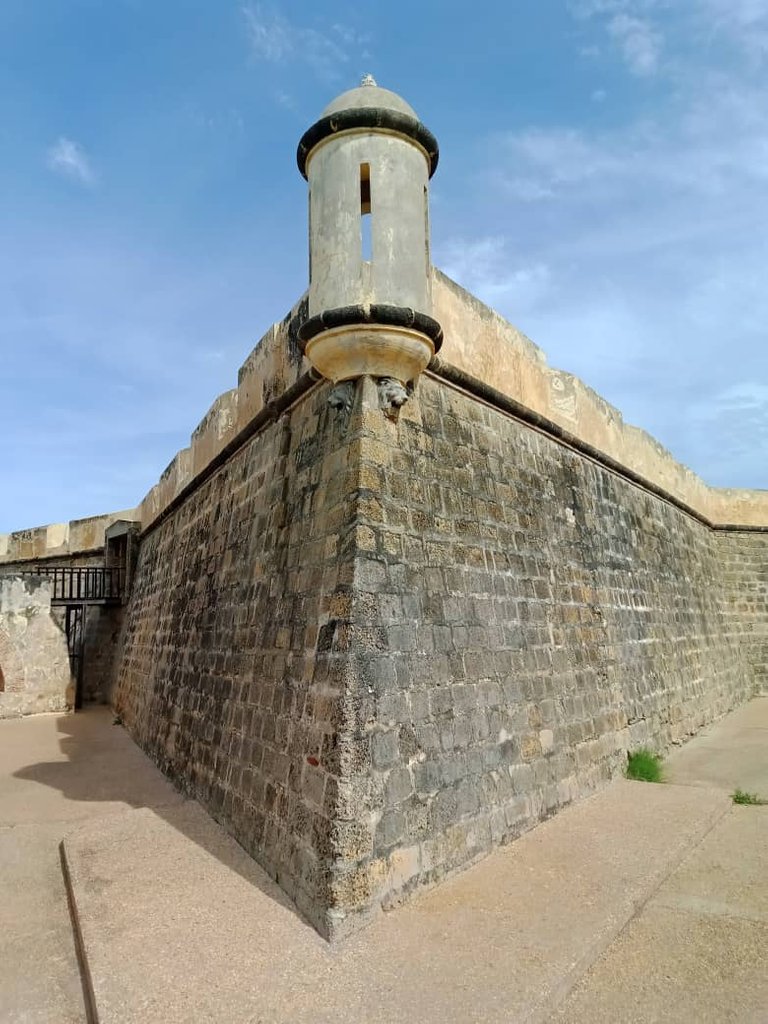
So far my visit to the castle; very happy to share with you my tour; Being in the highest part, I took advantage and took several photos of the beautiful views of the city that can be seen from the heights of the castle and the Eminencia hill. It was a great experience to visit this place again and I hope to return soon with my son so that Get to know this icon of Venezuelan colonial architecture, which has a lot to tell about the life of our ancestors and the utensils they used to do their daily tasks, such as grinding food (grains and seasonings), filtering water, and making tobacco. ; an economic activity that is still in force in several municipalities of the state, generating economic income for many families.
Hasta aquí mi visita al castillo; muy feliz de compartir con ustedes mi recorrido; estando en la parte más alta aproveché y tomé varias fotos de las hermosas vistas de la ciudad que se pueden apreciar desde las alturas del castillo y el cerro la Eminencia, fue una gran experiencia visitar nuevamente este lugar y espero volver pronto con mi hijo para que conozca este icono de la arquitectura colonial Venezolana, que tiene mucho que contar acerca de la vida de nuestros antepasados y los utensilios que usaban para hacer sus labores diarias, como moler la comida (granos y condimentos), filtrar el agua y la elaboración de tabaco; una actividad económica que aún se mantiene vigente en varios municipios del estado, generando ingresos económicos a muchas familias.

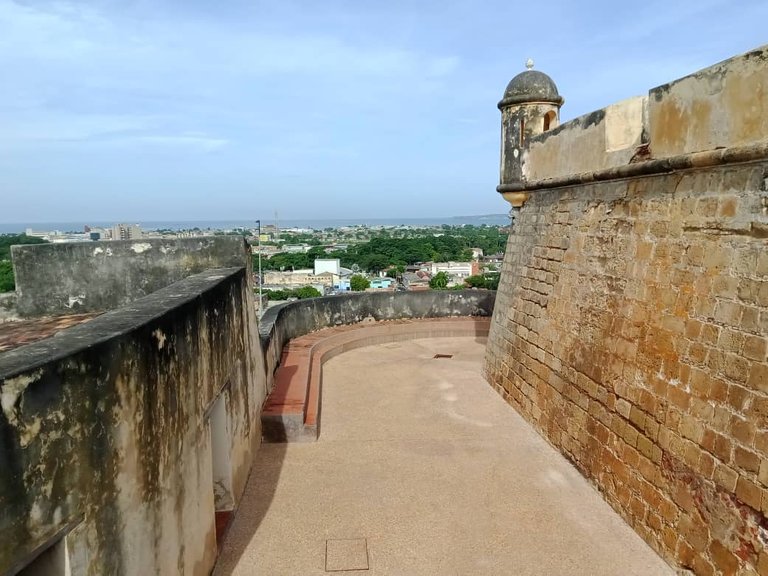
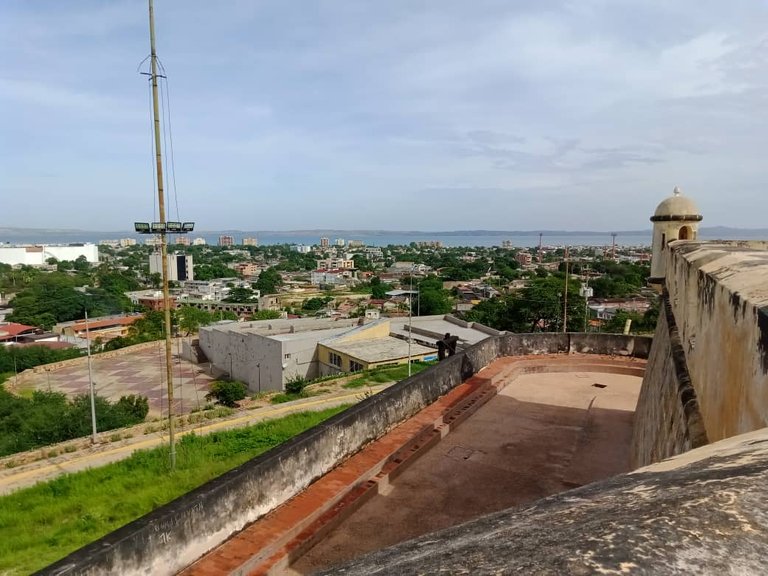
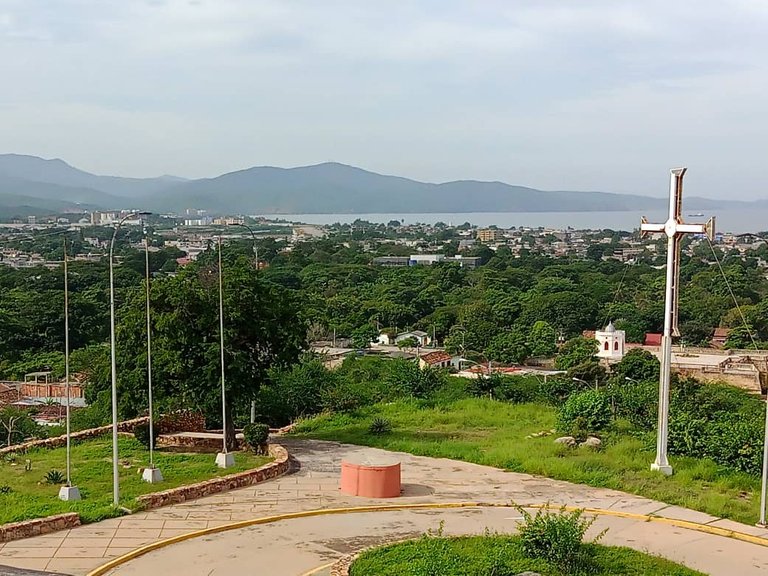

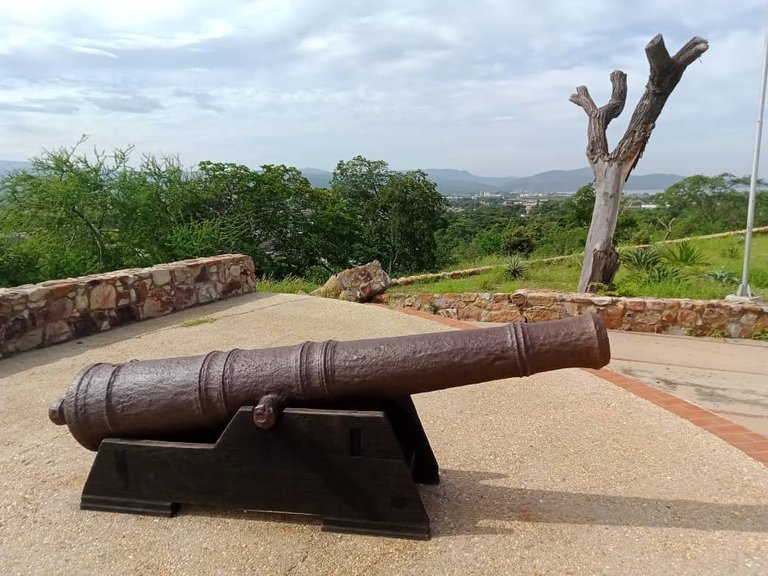



¡Bendiciones!
Blessings!

Translated with https://www.deepl.com/translator
All images are my own, captured by a Síragon LC-3000 camera.
Todas las imágenes son de mi autoría, capturadas por una cámara Síragon LC-3000.
https://twitter.com/1465404238268403727/status/1596096674371612672
The rewards earned on this comment will go directly to the people( @virgilio07 ) sharing the post on Twitter as long as they are registered with @poshtoken. Sign up at https://hiveposh.com.
This is why I love the architecture community, I learn a part of the history of my country even being far away. The most impressive or disturbing is the prison of oblivion, how that space was created to torture through architecture to a prisoner, impressive.
Hello @ginethchira2301, I'm glad it has helped you to know part of the history of our country Venezuela, each fortification has a lot of history to tell; the prison of oblivion was made with the idea of punishing those who opposed or disobeyed the rules of the Spanish empire, if a very serious offense was committed the punishment was just as strong, this prison was originally created with the castle, ie everything was in the construction plans I think they already had experiences with uprisings and rebellions in various areas of the country and this was a form of severe punishment for others to take example.
The size of the prison is impressive, really very small, it is very uncomfortable for a tall person to be there, I agree with you, this community allows you to know many places of the planet and its history.
Blessed day!
Hi @belkyscabrera , what a beautiful and informative trip full of history, I enjoyed it very much, here in Cuba we have very similar constructions, we have the same historical and cultural roots, I really liked the exterior stone wall, the arches are definitely beautiful, the whole place is like a trip to another era through history. Congratulations, very cool entry.
Notice in one of the last paragraphs that has no English translation. Ahh and I think the same as you, definitely these places should be promoted more, greetings and I enjoyed reading you.🖐️❤️
Hi @lileisabel, thanks for noticing the detail of the translation, I already edited it; I'm glad you enjoyed the tour, every time I visit this castle I learn something new or see a detail I overlooked, that's right we have the same historical and cultural roots, in Cuba they also built the castles with limestone rock ... being an island they had to be very large and safe fortifications to protect themselves from the attacks of pirates and privateers who sailed the Caribbean Sea in search of territories.
Precisely because of its historical and cultural value I like to visit this place, besides having the opportunity to observe much of the city from different angles, the view from above is impressive; promoting these places is an option for children to know part of the history of the city, the castle despite the years is kept clean and organized, several repairs have been made but its original form is maintained.
Have a happy and blessed day!
The preservation of these inherited historical legacies is very important, thank you very much for sharing @belkyscabrera , it is much appreciated, have a nice day. 👍
a very beautiful place but a little spooky..
Hi @maytom, it is a place with a great building that is still preserved and with many stories to tell.
Greetings!
Congratulations @belkyscabrera! We are delighted to inform you that your outstanding publication was specially selected to be part of our Curated Content Catalog and was awarded RUNNER-UP in Architecture Anthology™ 4. More power!
Thank you for subscribing to Architecture+Design, an OCD incubated community on the Hive Blockchain.
Hi @aplusd, grateful for the support and the selection of my content, very happy to be in the finalists box.
Success and blessings!
We are always delighted to serve you dear @belkyscabrera. Continue sharing awesome works about architecture and design. Have fun! 😀
Likewise @aplusd, happy and blessed weekend!
You too @belkyscabrera, have an enjoyable weekend! Blessings! 🙏😀
Que interesante es el casco histórico de Cumaná, su arquitectura y el estar cerquita del mar lo hace muchísimo más mágico, que lindas imágenes has capturado de nuestra ciudad gracias por compartir 💜